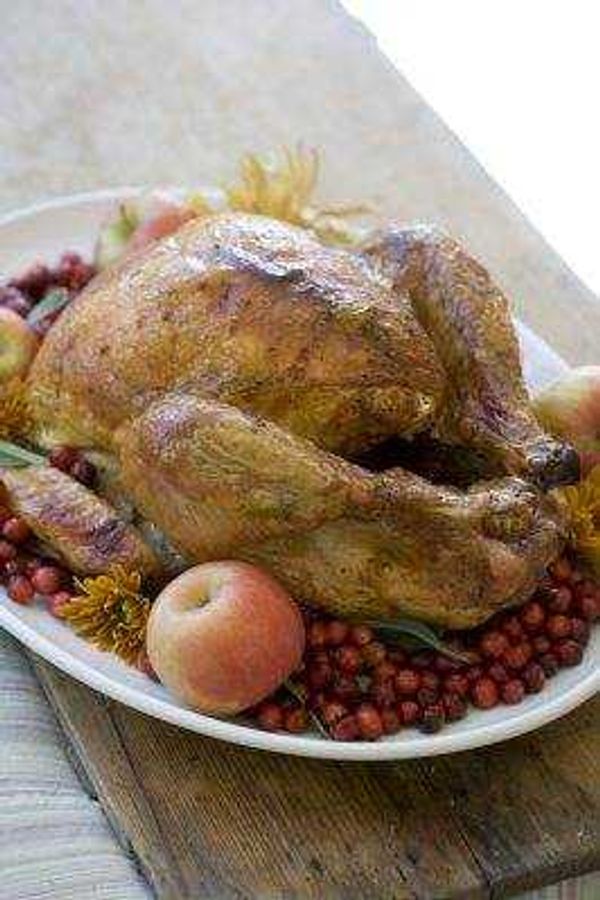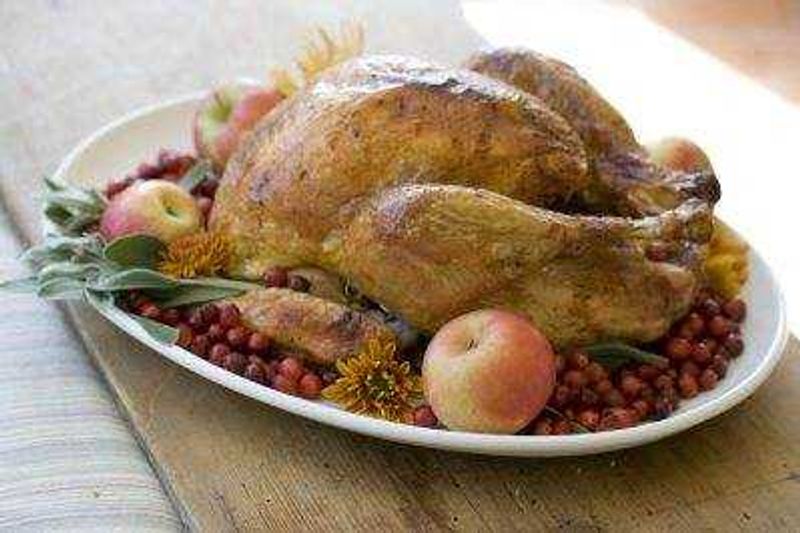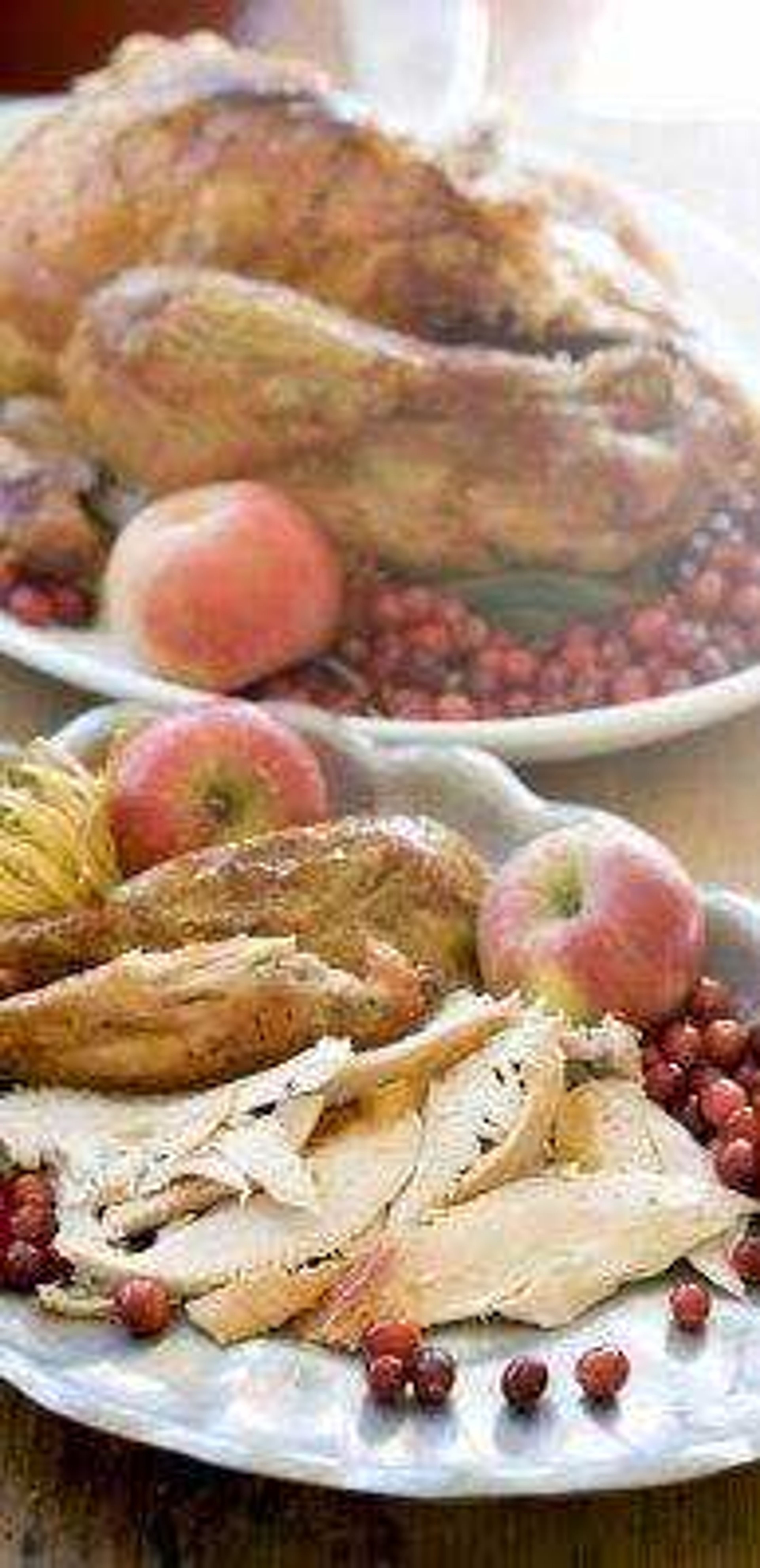Turkey math: A guide to help with your Thanksgiving meal planning
When it comes to Thanksgiving, survival is more important than correct answers. And while we can't prevent your relatives from driving you to crazy, we can give you a cheat sheet to some of the most common Thanksgiving math. Now you can focus on more important things, such as how many washings it will take to remove the cranberry sauce your mother-in-law spilled on the tablecloth...
When it comes to Thanksgiving, survival is more important than correct answers. And while we can't prevent your relatives from driving you to crazy, we can give you a cheat sheet to some of the most common Thanksgiving math. Now you can focus on more important things, such as how many washings it will take to remove the cranberry sauce your mother-in-law spilled on the tablecloth.
And because this is Thanksgiving, all serving estimates are generous to allow for plenty of seconds and leftovers.
How big
For turkeys less than 16 pounds, estimate 1 pound per serving (this accounts for bone weight). For larger birds, a bit less is fine; they have a higher meat-to-bone ratio. But if your goal is to have very ample leftovers, aim for 1 1/2 pounds per person no matter how big the turkey is.

- For 8 people, buy a 12-pound turkey
- For 10 people, buy a 15-pound turkey
- For 12 people, buy an 18-pound turkey
- For 14 people, buy a 20-pound turkey
The big thaw
The safest way to thaw a frozen turkey is in the refrigerator. You'll need about 24 hours per 4 to 5 pounds of turkey. For speedier thawing, put the turkey in a sink of cold water. Change the water every 30 minutes, and plan for about 30 minutes per pound.

The brine
A good brine uses kosher salt and sugar in a 1-to-1 ratio, and usually no more than 1 cup of each. Feel free to add any other seasonings. Brines typically are made by heating the salt, sugar and seasonings with a bit of water until dissolved. This mixture then is diluted with additional cold water (volume will vary depending on the size of your bird) and ice. Be certain the brine is completely cooled before adding the turkey.
Turkeys should be brined for at least 8 to 10 hours, but can go as long as 72 hours. A good rule of thumb is, the longer the brine, the weaker the brine. So for a 10-hour soak, use 1 cup each of salt and sugar. For a longer one, consider backing down to 3/4 cup each. Always keep the bird refrigerated during brining. If the turkey is too big, an ice-filled cooler stored outside works, too.
Don't have the time or patience to brine? Try salting instead. In fact, plenty of folks say salting a turkey produces meat with far better flavor than brining. To do it, set the turkey on a platter, then rub a generous amount of kosher salt on all surfaces. Cover with plastic wrap and refrigerate overnight. When you're ready to roast, rinse the salt from the turkey, pat it dry and pop it in the oven.
The roast

Roasting temperatures vary widely by recipe. Some go at a slow and steady 325 F. Others crank the heat to 400 F or 425 F for the first hour, then drop it down for the rest of the time.
However you roast, use an instant thermometer inserted at the innermost part of the thigh (without touching bone) to determine when your turkey is done. The meat needs to hit 165 F for safe eating, though some people say thigh meat tastes better at 170 F.
If the outside of the bird becomes too dark before the center reaches the proper temperature, cover it with foil.
The following roasting time estimates are based on a stuffed turkey cooked at 325 F. Reduce cooking time by 20 to 40 minutes for turkeys that are not stuffed (estimate total roasting times at 15 minutes per pound for unstuffed birds). And remember, a crowded oven cooks more slowly, so plan ahead if your bird needs to share the space.
Using a convection oven? They are great at browning, but require heating or timing adjustments. Either cut the temperature by about 25 F from what is called for by the recipe and cook for the time directed, or roast at the suggested temperature, but reduce the cooking time by about 25 percent.
The following times are for a standard oven:
- 12-pound turkey: 3 to 4 hours at 325 F
- 15-pound turkey: 4 to 4 1/2 hours at 325 F
- 18-pound turkey: 4 1/2 to 5 hours at 325 F
- 20-pound turkey: 5 to 6 hours at 325 F
The baste
Basting the bird with its juices helps crisp the skin and flavor the meat. Do it every 30 minutes, but no more. Opening the oven door too frequently lets heat escape and can significantly slow the cooking.
The rest
The turkey never should go directly from the oven to the table. Like most meat, it needs to rest before serving for the juices to redistribute. Cover the turkey with foil and a few bath towels layered over that (to keep it warm), then let it rest for 20 to 30 minutes.
The gear
You don't need to drop a load of cash on special equipment to be thankful this Thanksgiving, but there are some tools that make life easier (and the food safer). A digital instant thermometer or wired probe (that remains in the turkey during roasting) is the most critical. Cheap thermometers will set you back no more than $20.
A heavy duty roasting pan is a worthwhile investment, but only if you make gravy from the drippings (the pan can be set on the stovetop after roasting) and if you roast other critters during the rest of the year. Otherwise, do yourself a favor and spend a few bucks on a disposable foil roasting pan (get a sturdy one). This makes cleanup easier.
The sides
- Carrots: a 1-pound bag makes 4 to 5 servings
- Cranberry sauce: a 12-ounce package of fresh cranberries makes about 2 1/4 cups of sauce; a 16-ounce can has 6 servings
- Gravy: plan for 1/3 cup of gravy per person
- Green beans: 1 1/2 pounds of beans makes 6 to 8 servings
- Mashed potatoes: a 5-pound bag of potatoes makes 10 to 12 servings
- Stuffing: a 14-ounce bag of stuffing makes about 11 servings
The leftovers
For food safety reasons, leftovers should be cleared from the table and refrigerated within two hours of being served. Once refrigerated, they should be consumed within three to four days. Leftovers can be frozen for three to four months. Though safe to consume after four months, they will start to taste off.
Connect with the Southeast Missourian Newsroom:
For corrections to this story or other insights for the editor, click here. To submit a letter to the editor, click here. To learn about the Southeast Missourian’s AI Policy, click here.









